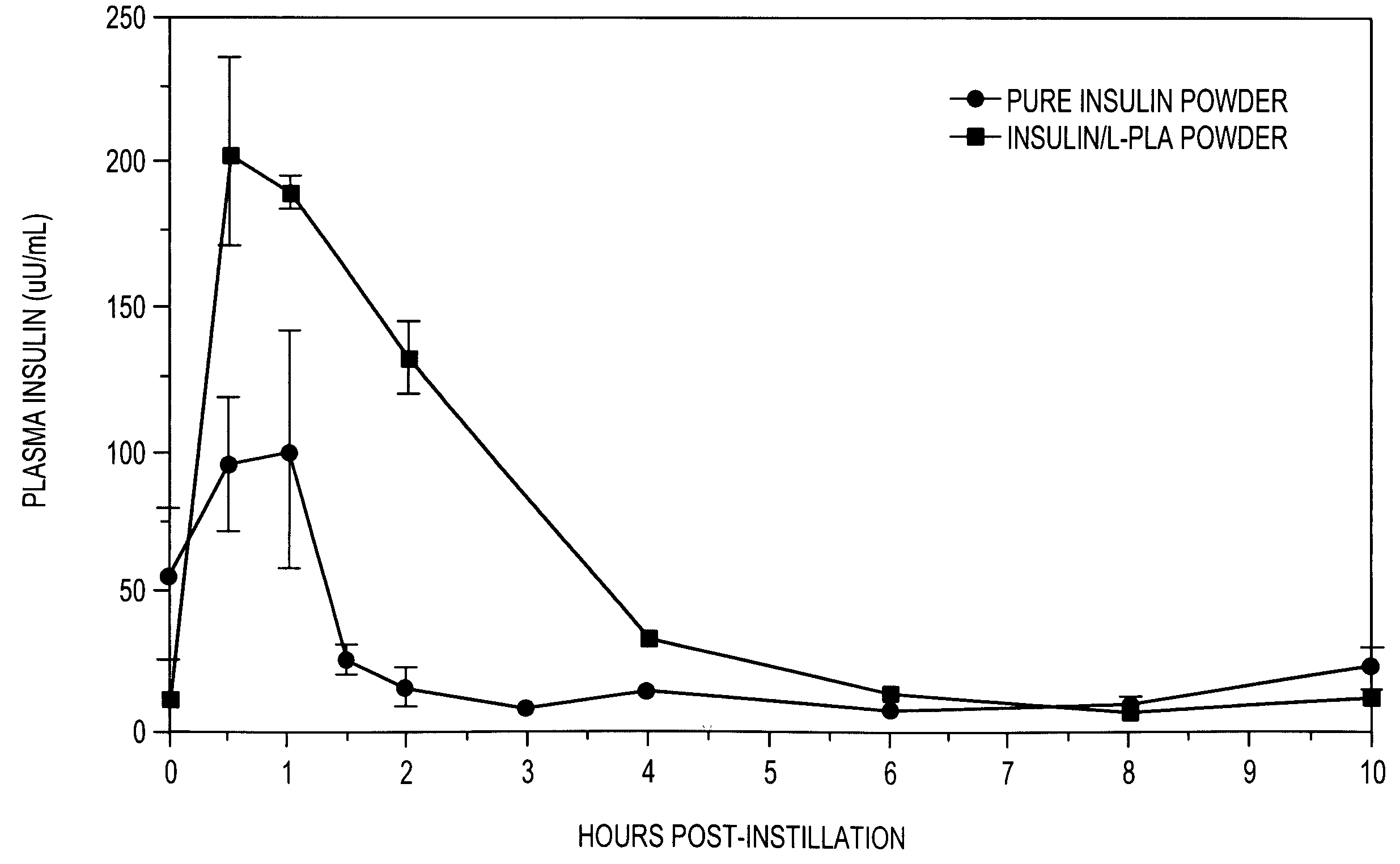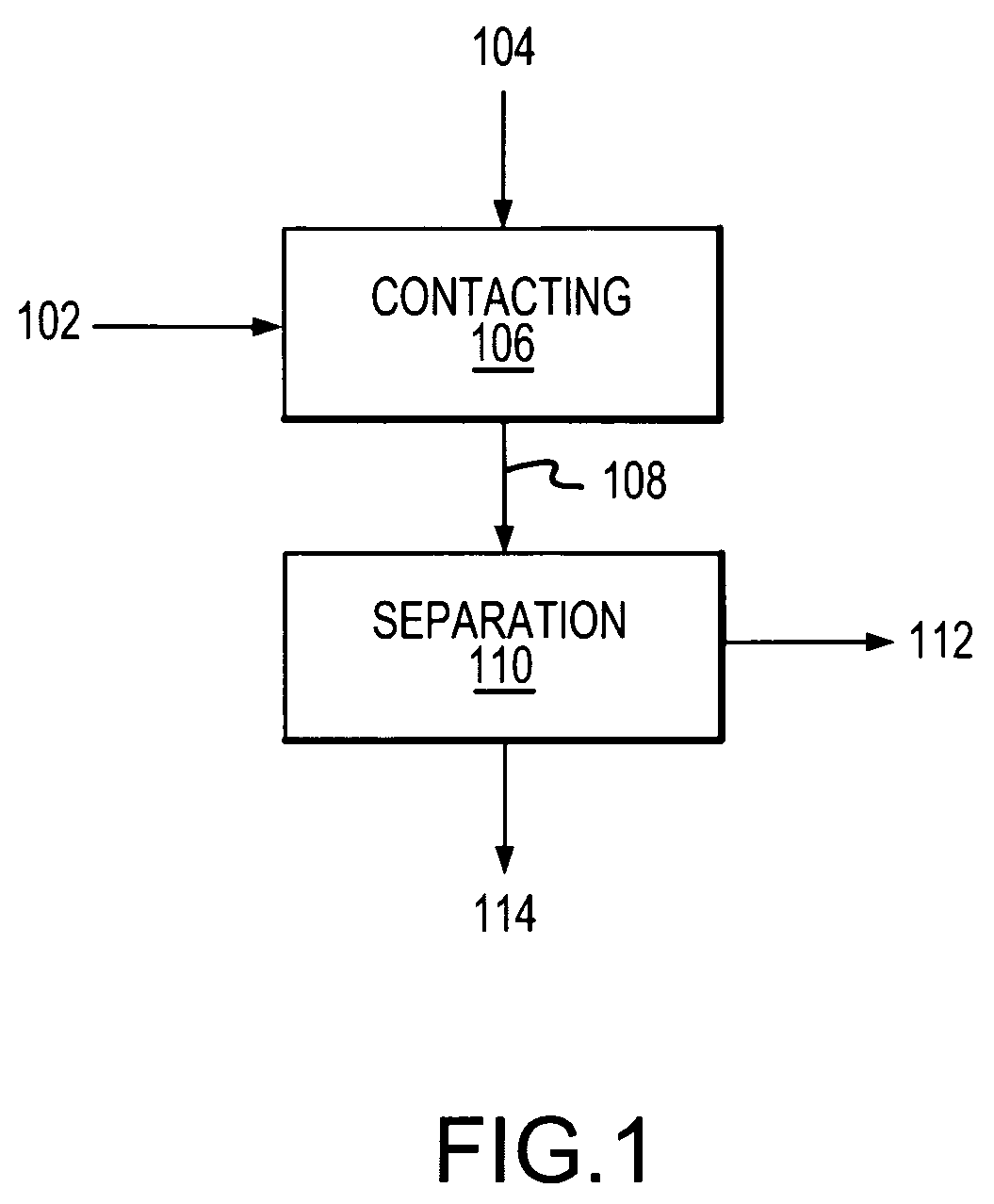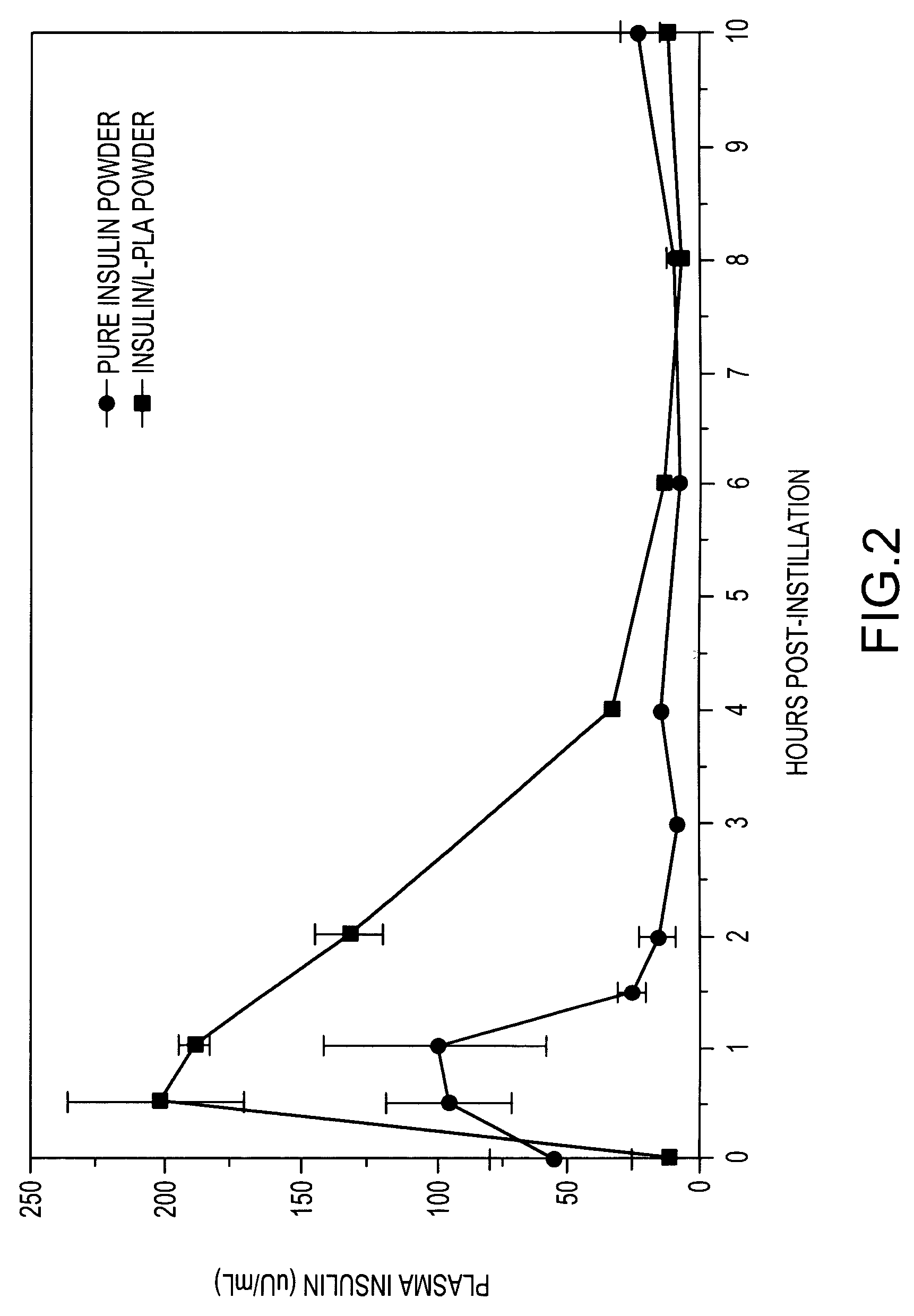Particulate drug-containing products and method of manufacture
a technology of powder and powder, which is applied in the direction of drug compositions, aerosol delivery, metabolic disorders, etc., can solve the problems of not producing powders with sufficiently good flowability or dispersibility characteristics to be advantageous for pulmonary delivery, and the presence of water in the cosolvent system can often be highly detrimental to the flowability and/or dispersibility characteristics of manufactured powders, so as to improve the characteristics of pulmonary delivery applications, reduce the effect of toxicity and high dispersibility
- Summary
- Abstract
- Description
- Claims
- Application Information
AI Technical Summary
Benefits of technology
Problems solved by technology
Method used
Image
Examples
example 1
[0110]This example demonstrates manufacture of single-component powders including substantially only insulin according to the manufacture method of the present invention using a feed solution including a cosolvent system.
[0111]Feed solutions are prepared including insulin dissolved in a variety of cosolvent systems at a concentration of about 1–2 mg / mL. The feed solution is contacted in countercurrent flow with supercritical compressed carbon dioxide as an anti-solvent flowing through a precipitation chamber at a temperature of about 37±2° C. and a pressure of about 83.6±1.4 atm to precipitate insulin from the feed solution. The precipitation chamber is a stainless steel chamber about 20 cm long and having a square cross-section of about 2 cm by 2 cm. The compressed carbon dioxide is delivered to the chamber via a pressure regulator and is introduced into the top of the chamber. The feed solution is delivered to the chamber via a syringe pump and is introduced into the flowing carbo...
example 2
[0117]This example demonstrates the manufacture of multi-component particles including insulin and a biocompatible polymer according to the manufacture method of the present invention using a feed solution including a cosolvent system.
[0118]Feed solutions are prepared including various molecular weight poly(L-lactic acid) and human insulin in different solvent systems. Tests 14 and 15 are comparative tests using a single solvent (DMSO), while tests 16–37 use various cosolvent systems with either DMSO or methanol as the first organic solvent and methylene chloride as the second organic solvent. Insulin loading is varied from 7% to 50% by weight (based on weight of insulin relative to total weight of insulin medium plus polymer). Each feed solution is prepared in 50 mL batches generally by the following procedure: DMSO or methanol is acidified with concentrated HCl to provide the desired level of acidification and the insulin is then dissolved into the resulting acidified solvent with...
example 3
[0123]This example demonstrates sustained release of insulin in animal studies by pulmonary delivery using multi-component particles including insulin and a biocompatible polymer.
[0124]A powder of substantially pure insulin, of the type as prepared in Test 2 shown in Example 1, and a powder of multi-component particles, of the type as prepared in Test 33 of Example 2 (including 12% by weight insulin and 88% by weight of 100 k Da L-PLA), are administered intratracheally to male rabbits. Blood samples are taken prior to administration and periodically over a 24 hour period following administration and analyzed for insulin concentration.
[0125]Male rabbits weighing about 3 Kg are treated and / or anesthetized with atropine (subcutaneous), acepromazine (intramuscular) and halothane (inhalation). Intratrachael insulin placement is accomplished using a pediatric bronchoscope. An aqueous suspension of the powder (11.16 mg powder / mL of saline) is administered with a syringe and catheter placed...
PUM
| Property | Measurement | Unit |
|---|---|---|
| biocompatible | aaaaa | aaaaa |
| hydrophobic | aaaaa | aaaaa |
| miscible | aaaaa | aaaaa |
Abstract
Description
Claims
Application Information
 Login to View More
Login to View More - R&D
- Intellectual Property
- Life Sciences
- Materials
- Tech Scout
- Unparalleled Data Quality
- Higher Quality Content
- 60% Fewer Hallucinations
Browse by: Latest US Patents, China's latest patents, Technical Efficacy Thesaurus, Application Domain, Technology Topic, Popular Technical Reports.
© 2025 PatSnap. All rights reserved.Legal|Privacy policy|Modern Slavery Act Transparency Statement|Sitemap|About US| Contact US: help@patsnap.com



